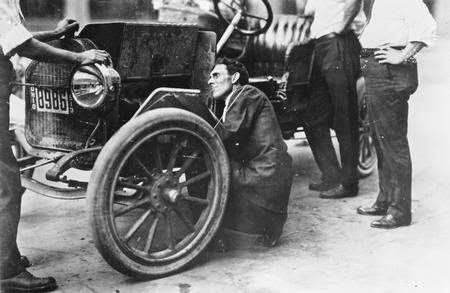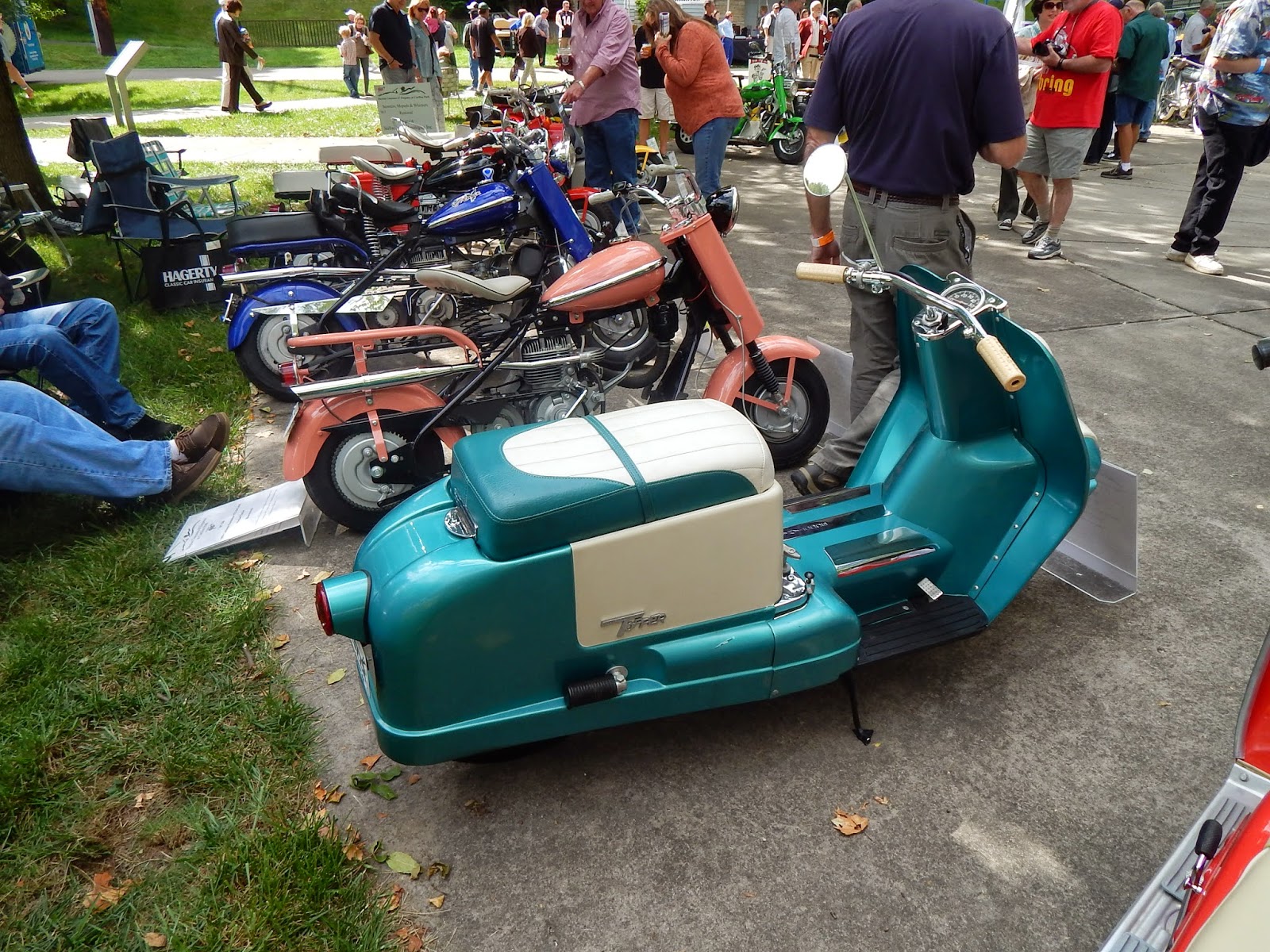 |
| a camshaft transfer machine |
Kettering
brought more to GM than just technical expertise: he brought talent that made crucial
contributions to GM’s efforts to surpass the Ford Motor Company during the
Interwar years. One of his closest associates at Delco was Richard H. Grant,
and it was Grant who drew on his experiences at National Cash Register and the
sales philosophy of John Patterson to teach GM to sell – first Chevrolets and
then the entire product line. Known as “Dynamic Dick” and the “Little Giant,”
Grant was one of America’s great salesmen. Born in Massachusetts and educated
at Harvard, Grant learned to sell at NCR, became its general sales manager in
1913, later moved to Delco and Frigidaire, and in 1923 joined Chevrolet as
sales manager. In 1929, Grant became a GM vice-president and was one of the top
four or five executives of the firm during the 1930s, with memberships on six
policy groups.
The “Little
Giant” played major role in reorganizing the distribution system at GM,
eliminating distributors who previously held large territories and had control
over local dealers. He was an orator and showman, but beneath the surface Grant
was a careful, systematic thinker who implemented market research, accounting,
and training procedures throughout the corporation. Grant had learned seven
fundamentals of sales from NCR’s John Patterson that were subsequently
instilled into GM personnel:
1. Have the right product.
2. Know the potential of each market
area.
3. Constantly educate your salesmen on
the product, making them listen to canned demonstrations and learn sales talks
by heart.
4. Constantly stimulate your sales
force, and foster competition. among them with contests and comparisons.
5. Cherish simplicity in all
presentations.
6. Use all kinds of advertising.
7. Constantly check up on your
salesmen, but be reasonable with them and make no promises you can’t keep.13
Grant further refined Alfred
Sloan’s notion of using R. L. Polk Company’s monthly state registration data to
closely monitor subtle shifts in consumer demand. By the late 1920s, this
information would be relayed to William Knudsen’s production group, thus
ensuring that the automobiles made would be the kind that customers would quickly
buy off dealer’s lots.
Closely related to Grant’s efforts
were those of the customer research group, led by Buck Weaver.14
Weaver and his associates formulated a set of questionnaires aimed at asking
the broad question of “What do customers want?” A large number of potential
questions were mailed memorandum books in which every aspect of design and
engineering was queried. Among the questions asked were what should be the
shape of the radiator; what designs are too conservative and too extreme; should
there be running boards on cars; and most significantly, how should a car be
sold. For buyers of the early 1930s, the results of the surveys pointed to
their priorities for cars that were dependable and economical. For the average
American, speed and the power of the engine seemed to be the least of their
concerns.15
With the advent of Alfred Sloan’s
idea of a car “for every purse and purpose,” and his choice of executive
leadership in the likes of Kettering, Grant, and production genius William
Knudsen, General Motors came to dominate the automobile industry. In the third
phase of the production process, from the mid-1920s into the 1950s, Fordism was
modified and intensified, thus evolving into what became known as “Sloanism.”
Sloanism can be thought of as an ongoing structural process by which an
organization is shaped and decisions made in such a way as to facilitate
effective positive change in the workplace and marketplace. By the 1930s,
Sloanism translated into committees that set policies and decentralized
operating divisions managed by individuals.
Sloanism was an idea at GM as early
as 1925, first introduced on the shop floor in 1928, and fully implemented by
1932 and 1933. With machines that were flexible, rapid model change was now
possible. Some assembly line positions were reskilled under Sloanism, as “vital
maintenance and repair workers made up nearly 10 percent of the industry’s
labor force.”16 To fit machines to new models, a new class of
mechanics was created. They were paid to think, solve problems and define the
task that they had to accomplish.17 Flexible mass production marked
an important change for organized labor, but Fordism remained the productive
motif for most Americans working in automobile assembly plants.18
Stephen Meyer noted the continuity: “The Sloanist flexible production system
retained the Fordist features of routinized work and work processes; it
remained monotonous, repetitive, and machine paced.”19 For
semiskilled and unskilled workers, the new machines furthered degraded skills
and intensified the pace of the assembly line.
In the 1920s, managers and foremen
aimed to increase output per worker to meet the insatiable demand for cars.
Though the annual model change appealed to the American consumer, it frustrated
the auto worker. “The annual model change meant several days or weeks of
fussing and fumbling until they adjust to the new routines and rhythms of their
work.”20 As Joyce Shaw Peterson indicated, early autoworkers
sometimes opted to keep doing the same monotonous job in order to “space out”
or daydream, rather than having to learn a new job.21 The increased
demand was met with a speed-up of the assembly line. James Flink noted that
“Sloanism thus had the effect of intensifying the amount and pace of
dehumanizing work in automobile manufacturing . . . there
was degradation of labor to lower skill levels and intensification of the
production process.”22
Flexible mass production persisted
into the Great Depression. At General Motors, the process paid off; during the Depression
they reported profits every year.23 Indeed, by the late 1930s GM was
no longer considered as “Big Business,” but as “Colossal.” Even during the
darkest days of the Great Depression, the firm had over 250,000 employees
working in 110 manufacturing plants located in 14 states and 18 countries.24
By the mid-1920s the GM strategy of
a car for every purse and taste was markedly cutting into Ford sales. GM
exemplified what the power of technology and organization, harnessed together,
could do to dominate the American automobile industry. Chevrolet, the lowest
priced of the GM models, was not only a key to GM’s success, but emerged as the
car for everyman by the end of the 1920s. Chevrolet was created by race driver
Louis Chevrolet and Billy Durant before WWI. Originally an expensive automobile
with a 6-cylinder engine, it later became a low-priced car with a smaller
engine. During GM’s financial crisis in 1920, discussions took place during
which it was proposed that Chevrolet would be dropped as a product line, but in
1922 William Knudsen was hired to head production and Richard Grant sales. By
1927, Chevrolet had outsold Ford and became the largest customer for the
various GM parts subsidiaries, like Delco-Remy, Fischer, Harrison, and Guide
Lamp.25 The 1929 Chevrolet, with features that included the reliable
“stove-bolt” six (labeled so because of the stove bolts which held many of the
engine parts together), set the benchmark for low-priced cars. As shown in
Table 3, by the mid-1930s Chevrolet sales consistently outpaced Ford’s,
reflecting both GM’s ascendancy and Ford’s relative decline in the American,
and indeed world market place.
Table 3: Ford vs. Chevy Passenger Car
Production, 1928-1942
|
Year
|
Ford
|
Chevrolet
|
|
1928
|
713,528
|
786,670
|
|
1929
|
1,715,100
|
856,384
|
|
1930
|
1,261,053
|
647,520
|
|
1931
|
626,579
|
623,901
|
|
1932
|
420,824
|
323,100
|
|
1933
|
334,949
|
486,378
|
|
1934
|
563,921
|
556,666
|
|
1935
|
942,349
|
793,106
|
|
1936
|
791,812
|
971,595
|
|
1937
|
848,608
|
866,885
|
|
1938
|
410,048
|
489,143
|
|
1939
|
532,152
|
645,905
|
|
1940
|
599,175
|
894,178
|
|
1941
|
600,814
|
928,477
|
|
1942
|
43,407
|
45,393
|
Source: Ray Miller, Chevrolet: The Coming of Age,
1911-1942 (Oceanside, CA: Evergreen Press, 1976), p.319.















